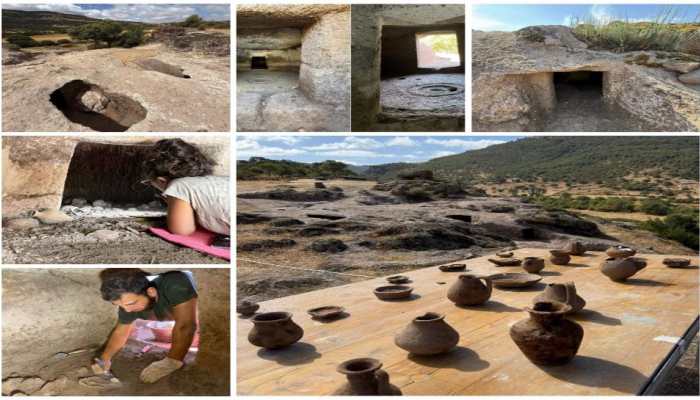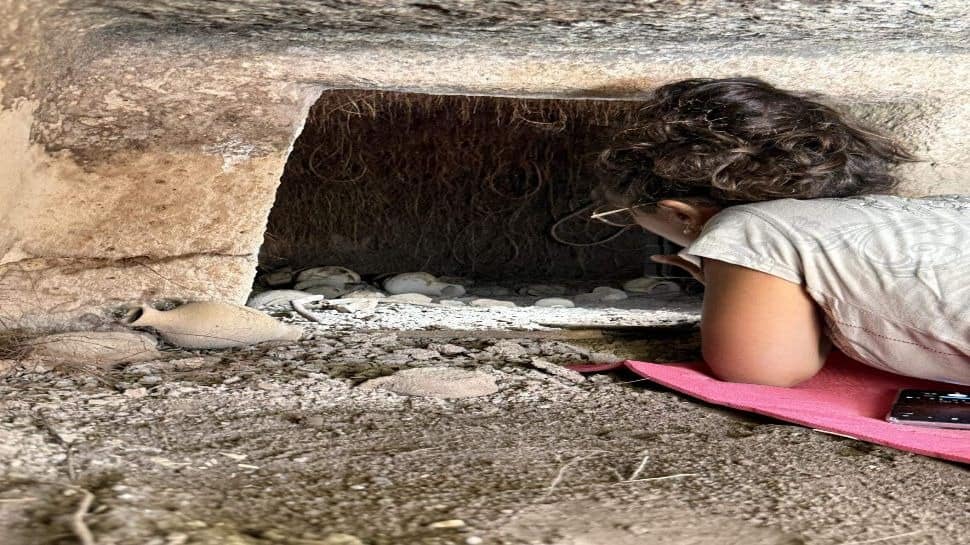Hidden For Millennia Beneath Italy’s Sardinia, The ‘Fairy Houses’ That Time Forgot – See Them
Beneath a sun-bleached plateau in Sardinia, three ancient rock-carved chambers emerge from the earth, still holding treasures untouched for thousands of years.
Trending Photos
) Photo Source: Posted on Facebook by Regional Secretariat of the Ministry of Culture for Sardinia.
Photo Source: Posted on Facebook by Regional Secretariat of the Ministry of Culture for Sardinia.New Delhi: The summer light of Sardinia (an Italian Island in the Mediterranean Sea) spills across a jagged plateau, turning the rock a pale gold. The wind carries the dry scent of wild herbs, rustling through the grass between scattered ruins. For nearly two centuries, archaeologists have combed this ancient necropolis, a place where the island’s story runs from prehistory to the early Middle Ages. However, the earth still had one more secret to keep.
In a space between two long-exposed tombs, the ground held a subtle and almost invisible sign such as a curve of stone and a shadow where there should not be one. The excavation team paused and then began to dig. What emerged was stranger and more beautiful than they had imagined. They found three Domus de Janas, the so-called “fairy houses” of Sardinia’s oldest legends.
Where Myth and Stone Meet
Local folklore says the Janas were tiny and elusive fairies. They lived in rock-hewn chambers, weaving gold on delicate looms, guarding sleeping children and, for those deemed worthy, bestowing gifts of unimaginable value. Some swear they saw these beings at play, quarrelling with goblins and elves in moonlit clearings.

But beneath the romance of myth lies the truth of history. These “fairy houses” are prehistoric rock-cut tombs, carved some 5,000 to 7,000 years ago.
The United Nations Educational, Scientific and Cultural Organization (UNESCO) calls them reflections of Sardinia’s earliest funerary rites and spiritual beliefs, their narrow corridors and chambers decorated with sacred symbols and motifs.
Three Tombs, Three Stories
The team numbered the new discoveries XVIII, XIX and XX. Tomb XVIII begins with a narrow and corridor-like entrance. It opens into a rectangular chamber, with its floor marked with a hearth symbol (two concentric circles carved into the stone). Two more rooms branch from here. At the entrance, archaeologists uncovered obsidian fragments, a spindle and ancient pickaxes, as if the last craftsmen had just stepped away.

Tomb XIX, the smallest of the three, holds a central rectangular room and a rounded side chamber, which was fronted by an external pavilion. They found a delicate miniature vase and pottery pieces within, with their shapes still clear despite the centuries.
Tomb XX is the grandest and most intricate. Seven chambers lie within, with one still carrying traces of faded paint. Across the rooms lay more than 30 Roman-era artifacts such as jugs, lamps and plates. They are a reminder that even in later centuries, these tombs drew human presence.
An Ancient Invitation
Photos of the finds, which have been shared by Sardinian cultural officials, capture the magic of the discovery – the child-sized doorways, the red-tinged stone, the intimate spaces that once held the dead and, perhaps, the dreams of the living.

The “fairy houses” now stand open to visitors at the Necropolis of Saint Andrea Priu, where the excavation continues.
Beneath the Mediterranean sun, the past waits patiently, carved into the island’s stone, whispering both legend and truth.
Stay informed on all the latest news, real-time breaking news updates, and follow all the important headlines in india news andworld News on Zee News.
Live Tv



)
)
)
)

)
)
)
)
)
)
)
)
)
)
